Gentle Fermented Recipes for Early Childhood Taste Growth
Sep 09,2021
Gentle Fermented Recipes for Early Childhood Taste Growth
Sep 09,2021


The term “early childhood meals” refers to meals for fully weaned children between a year and a half and six years old. While there’s a wealth of information on baby meals out there, early childhood meals tend to be left entirely up to the parents. Many moms and dads feel as if they’re suddenly all on their own as soon as their little one has made the transition from baby food. It can be an isolating experience.
Is it okay to feed your child the same foods as grown-ups? What precautions should you take when preparing meals? If you’re a dad and mom with these or similar concerns, here’s some advice on how to go about making early childhood meals from registered dietitian and culinary expert Nakamura Miho. She also shares some of her favorite fermented food recipes for small children.
Early childhood is the preparatory phase during which your little one gradually transitions to adult meals once they’re done with baby food. What should you keep in mind when making meals for a child of this age? Miho provides three main guidelines.

Registered dietitian and culinary expert Nakamura Miho
During early childhood, children gain the ability to eat almost the same foods as grown-ups. But “caution is in order,” says Miho, “because they’re still underdeveloped in many ways.” You should take particular care to develop their sense of taste and eating ability, both of which are nurtured by the meals eaten at this stage.
・Sense of taste
Taste consists of five basic elements: sweet, sour, salty, bitter and umami. Intense flavors and strong stimuli may impair its development. Try to keep meals as mild-tasting as possible. Go easy on stimulants like hot spices.
“Beware of snack foods, juices, and rich-tasting processed foods. They’re habit-forming, so once you let your child have them, that’s all they’ll want, and they won’t eat their meals. As a parent, take care to properly develop your child’s sense of taste so they get the right balance of nutrients their body needs.”
・Eating ability
Eating ability can be divided into the basic physiological functions involved in absorbing nutrients, and the ability to make proper use of eating utensils. You can develop physiological functions like mastication, swallowing, and digestion by gradually adding chewy foods to the menu.
“During the baby food phase, children learn certain motions when eating with their fingers. Help your little one develop those motions into the process of putting food in their mouth using eating utensils. Eating utensils also help develop the ability to manipulate their hands and fingers.”
What you eat in early childhood lays the foundations of your future eating habits. It’s important to build up as much experience with food as possible during these years, according to Miho.
“Your child can build up experience with food by tasting various ingredients, taking part in making meals, and enjoying meals with others. As a parent, don’t worry too much if they’re finicky about their food as long as it doesn’t stop them from getting a balanced diet. Give them plenty of opportunities to try different foods, especially seasonal ingredients.”
The most important thing to keep in mind when preparing early childhood meals, says Miho, is this: Bring out the taste of the ingredients themselves, without going to too much effort.
“It’s not what you make. It’s what you make it with. Choose the best-quality ingredients you can. By quality ingredients I don’t mean premium ingredients. I mean, for example, ingredients from known sources, fresh ingredients, ingredients produced with minimal pesticides and chemical fertilizers. And keep the prep simple so the flavor of the ingredients shines through.”
Here are three early childhood meal recipes crafted by Miho that you can enjoy with your child. All feature fermented foods.
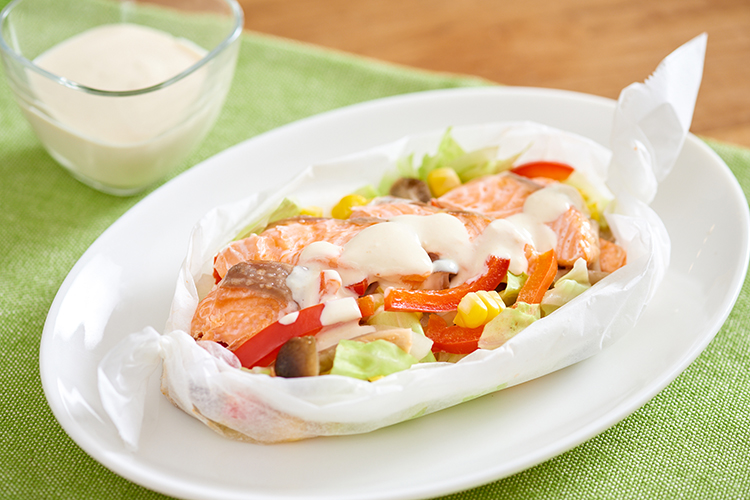
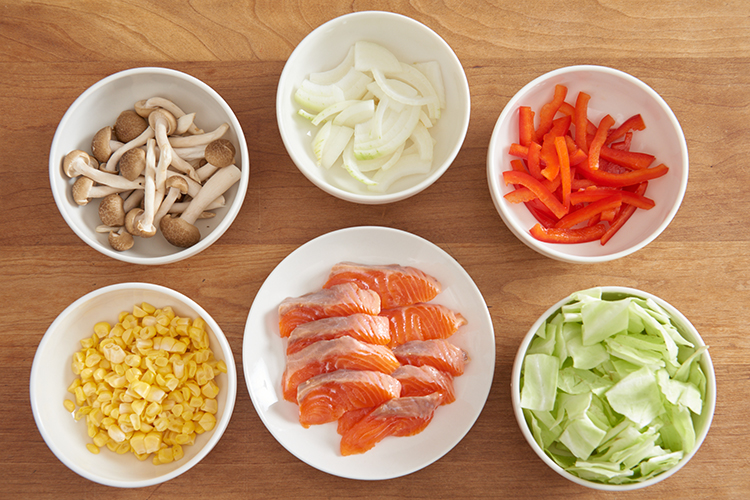
3. Place a sheet of parchment paper diagonally, then arrange the ingredients from Steps 1 and 2 on it and sprinkle with water.
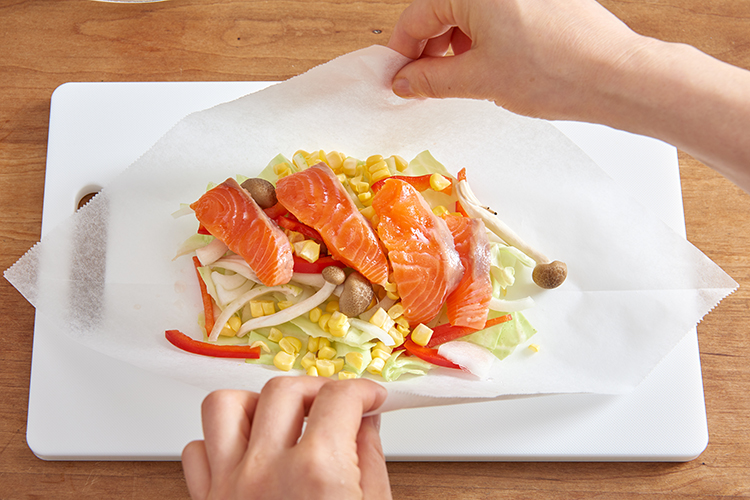
The sheet of parchment paper should measure roughly 30 cm by 30 cm.
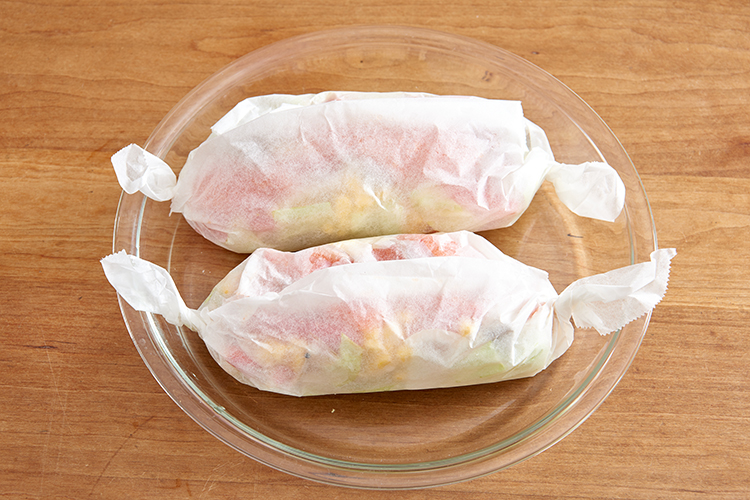
These wraps can be made in short order without using an open flame, plus there are few dishes to wash. You can have fun with your child cutting or tearing the vegetables and wrapping the ingredients in parchment paper.
“The sauce made with yogurt tastes light and refreshing. It’s low in sodium and supplies calcium. You can make these wraps taste more satisfying for adults by adding pepper and garnishing them with condiments like oba (perilla leaf) or konegi (scallions). Eating the same meal as your child has several advantages. Besides being more efficient to prepare, it’s healthier for you as an adult because it reduces your salt intake. And your child can enjoy their meal while watching you eat the same thing. That reassures them and stimulates their appetite.”
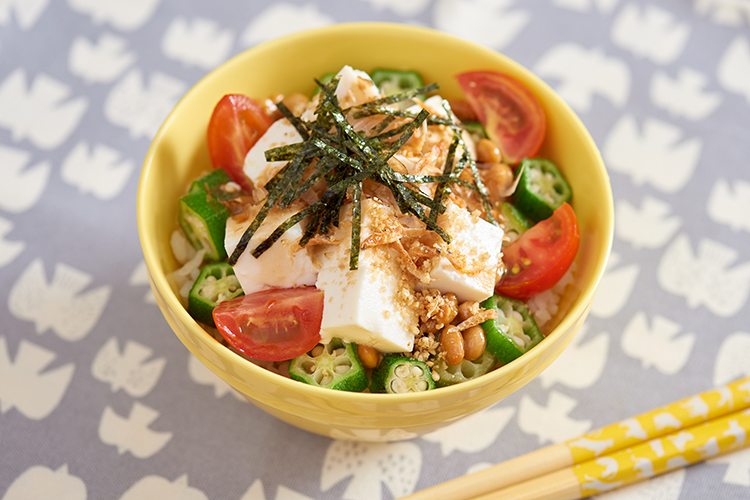

This dish goes down smoothly even when you’re tired out and have no appetite. It’s a real stamina booster.
“This dish is a lifesaver. It can be fixed up in a mere five minutes, and it’s an excellent source of protein. It’s perfect for mornings when you’ve got no time or aren’t feeling hungry. The grown-ups in the house can top it with garnishes like wasabi and oba (perilla leaf). I’d also recommend adding olive oil or soy sauce.”
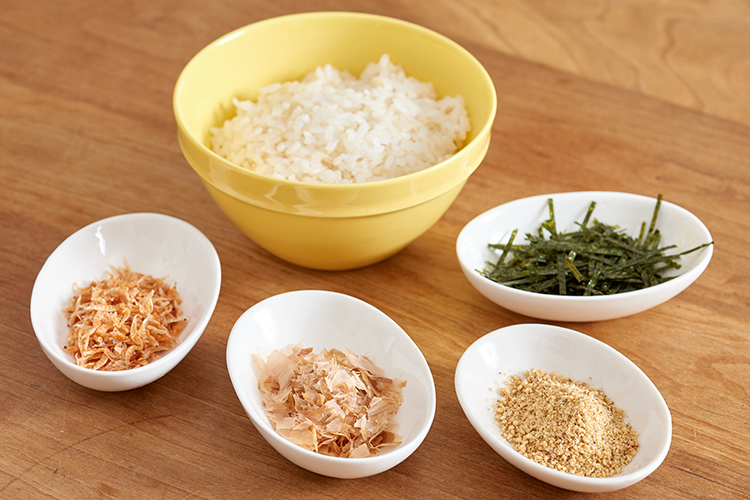
Having plenty of other topping ingredients on hand besides thinly shaved katsuobushi and shredded nori makes mealtimes more enjoyable for your child.
“It’s exciting for your child to be able to select their favorite toppings from an assortment of choices. It’s also a great learning experience. They get to see how the taste varies depending on the toppings. And they discover how adding toppings makes a dish taste better and look more colorful. Let your little one choose their own toppings while telling them, say, how sakura shrimps are full of calcium and a source of minerals.”
One way to get more out of your toppings, Miho suggests, is to use them to make furikake: a dry condiment for sprinkling on rice.
“Store-bought furikake has a bit too much salt for a small child. It may also contain MSG or other additives. So try to give your little one as little as possible in early childhood, when their sense of taste is still developing. You can prepare a great-tasting homemade furikake simply by combining whatever ingredients you have at home: katsuobushi (dried skipjack tuna), sakura shrimp, chirimenjako (dried baby sardines), sesame seeds, nori, and so forth. Why not give it a try?”
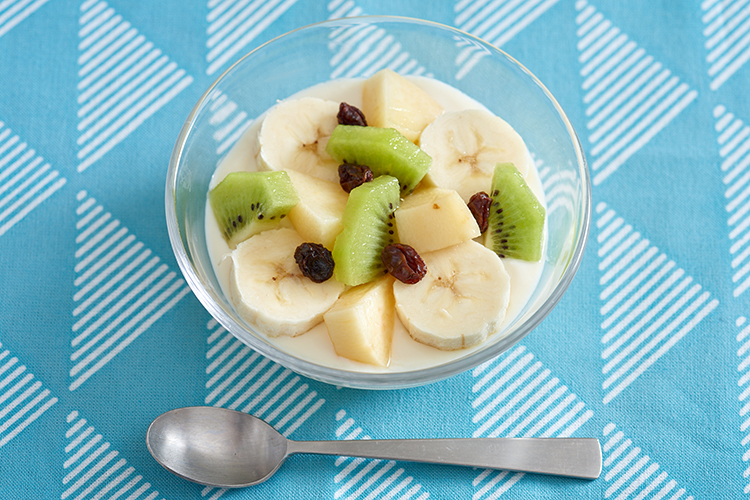

“This can be made with the yogurt left over from the microwave-steamed fish and vegetable wraps with yogurt and miso sauce. It’s a great dish to make with your child. Even a one- or two-year-old can peel a banana and sprinkle on raisins.
“I often recommend this recipe for parents to make with their child. No matter how busy you are, it can be put together after your meal in just ten minutes. If you’re concerned that your child isn’t a good eater, you might want to give it a try.”
A recipe like this helps boost your child’s nutrition with dessert. That’s particularly valuable in early childhood, when it can be difficult to get your child to eat enough.
“Accustoming you child’s palate to the sourness of plain yogurt and the natural sweetness of fruits, as opposed to sugar, prevents them from becoming addicted to candies.”
A child with a hearty appetite in early childhood may get too many nutrients. A child with a poor appetite may become undernourished because they don’t eat enough or have an unbalanced diet. Keep track of the results of your child’s checkups, and boost their nutrition as appropriate, without going overboard.
Nurturing your child’s sense of taste can help you rediscover your own.
“Making early childhood meals might be a good chance to rethink the amount of, say, sodium in your own diet. Just taking a bit of extra care can make a difference in how you feel and improve your mental and physical health.”

As a dietitian at a preschool, Nakamura Miho prepared meals for babies and small children and taught about nutrition. She was also involved in community parenting support programs. Since striking out on her own in 2009, she has run her own cooking school and taught classes in making baby meals. Her motto is “making mealtimes more delicious and enjoyable.” Besides giving seminars on nutrition, she also supervises recipes for books, magazines, and television.